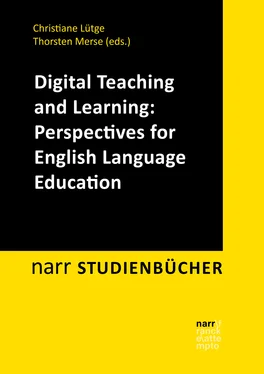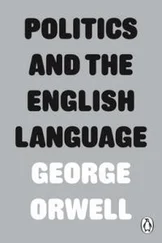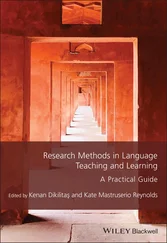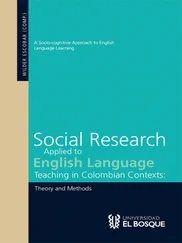CL and TM: Looking back, what are the most exciting developments in the field of digital learning and teaching over the past years?
NH: For me, the most exciting development is undoubtedly the rise of mobile technologies. Mobile technology has seen us integrate a range of digital tools into our daily lives, for personal and professional use, to a level that was unthinkable just two decades ago. What’s more, before mobile, the geographical digital divide was much wider. When I first started working online in 1997, getting online required relatively expensive access to infrastructure such as wired Internet connectivity, and of course access to expensive hardware in the form of PCs and laptops. With the advent of mobile technologies, many developing countries have been able to leapfrog over the need for expensive wired internet infrastructure, and have moved directly to mobile technologies.
And of course, the longer that mobile technology has been around, the cheaper it has become. Some smart phones are now relatively inexpensive, certainly compared to when they first came out. Even simple internet-enabled ‘feature phones’ give users access to email and multimedia in the form of audio and photos. This doesn’t mean that there is equal access to the internet and devices worldwide, but the gap has narrowed over the past few decades, and mobile technology has played a significant role in this.
In terms of access to online language learning and online teacher development, mobile technology and Web 2.0 enabled access to a huge range of resources for learning. The rise of social networks, too, has seen teachers and learners able to access personal learning networks, and to connect with other learners and teachers all over the world. Continual professional development for teachers, much of it free, is now available through a tap on a mobile device screen.
I started using mobile devices with language learners early on, and undertook a research project for The International Research Foundation (TIRF) in 2012, which resulted in the development of a framework for effective mobile-based task design for language learners. You can read the research paper ‘Designer Learning: The Teacher as Designer of Mobile-based Classroom Learning Experiences’ online: www.tirfonline.org/publications/mobile-assisted-language-learning/designer-learning-the-teacher-as-designer-of-mobile-based-classroom-learning-experiences/. Gavin Dudeney and I subsequently wrote a teachers’ resource book called Going Mobile (2013, Delta Publishing) to help teachers understand the potential of mobile devices, and to provide activity ideas and guidelines on how to use them effectively in the classroom. I have always been interested in the possibilities that mobile devices bring to classroom learning, and I believe that mobile devices have plenty of potential to support language learning when used effectively with well-designed tasks. To my mind, mobile technology is still the single most exciting technology development we’ve seen.
CL and TM: Your own work is closely associated with the model of digital literacies you developed together with Mark Pegrum and Gavin Dudeney. What has originally caused you to develop this model, and what aspects did you feel needed integrating into current revisions of this model?
NH: Literacy has always been a central concern of formal schooling. In the past literacy included learning how to read and write, numeracy, and media literacies (e.g. looking at traditional media such as TV or newspapers with a critical eye). With the advent of digital technologies and the Internet, it has been apparent for some time that children need to learn additional literacies in order to thrive in our modern hyper-connected and digital world. Hence the focus on digital literacies reflected now in most educational curricula around the world, at primary, secondary and tertiary level.
‘Digital literacies’ is an umbrella term, and as such, it is somewhat vague. Although almost everyone agrees that we need to be digitally literate, exactly what that consists of is less clear, despite the existence of numerous frameworks. Our model of digital literacies is a construct that tries to break down the rather vague term ‘digital literacies’ into smaller and more understandable competences or sub-skills. Our model groups these sub-skills (or ‘literacies’) into four main areas: 1) communication; 2) information; 3) collaboration; and 4) (re)design. We consider these four areas to be the lynchpins in any consideration of digital literacies. Communication because digital technologies allow us to be connected and to communicate both locally and globally, via range of tools and media, as never before. Information because of the vast amounts of information that we can now create and/or find online; and we need a range of digital literacies to be able to access, evaluate, create and understand this digital information. Collaboration because digital technologies allow us to collaborate, to present ourselves, and to learn and work in distributed networks globally. And finally (re)design because since the rise of web 2.0 in the late 1990s, we have been able to produce or design our own digital content, redesign or remix the digital content of others, and to easily share that content across a wide variety of digital channels.
Our model of digital literacies was developed, particularly by Mark Pegrum, in the early 2010s, and the first edition of our book Digital Literacies was published in 2013. A lot has happened technology-wise since then. We have seen the development of new digital technologies and tools such as fitness trackers, or augmented and virtual reality apps and headsets. Each of these new tools allows us to do new things in our personal and professional lives, and they require new digital literacies. For example, understanding and applying the data provided by your fitness tracker requires a certain amount of data literacy. Using virtual and augmented reality requires spatial literacy. There is also an increasing amount of misinformation and disinformation being spread online, which we ourselves may unwittingly share or amplify via our social networks. Navigating one’s way safely and ethically through this ‘information pollution’ (Wardle & Derakhshan 2017) means that ethical and critical digital literacies have become more important than ever. Current revisions of our digital literacies model keep the same four key areas, but we have renamed some literacies (e.g. ‘multimedia’ literacy has become ‘multimodal’ literacy to reflect current scholarship), and we have added others (e.g. data literacy and a range of critical literacies – critical mobile literacy, critical material literacy, critical philosophical literacy, and critical academic literacy). Code literacy now includes an overt focus on technological literacy and robotic/AI literacy to reflect current developments in hardware and software that are likely to become increasingly important in the future.
Although ours is one of several digital literacies models or frameworks currently in existence, what makes it unique is that we focus on language teaching and learning . Our model is quite detailed, with several literacies within each of our four key areas, and we provide concrete activities for teachers and learners that can support the development of specific digital literacies at the same time as developing students’ language skills. Our focus on digital literacies is both theoretical and practical, and our model has been used to inform a number of European language learning initiatives, including the DigiLanguages project funded by the Irish National Forum for the Enhancement of Teaching and Learning ( www.digilanguages.ie), and Swedish pre-service and in-service teacher development programmes (Allen, 2015; Berggren & Allen, 2017). The second edition of our book Digital Literacies (Dudeney, Hockly & Pegrum, forthcoming) will include activities for language learners that help them develop the newer digital literacies in our framework too.
Читать дальше












